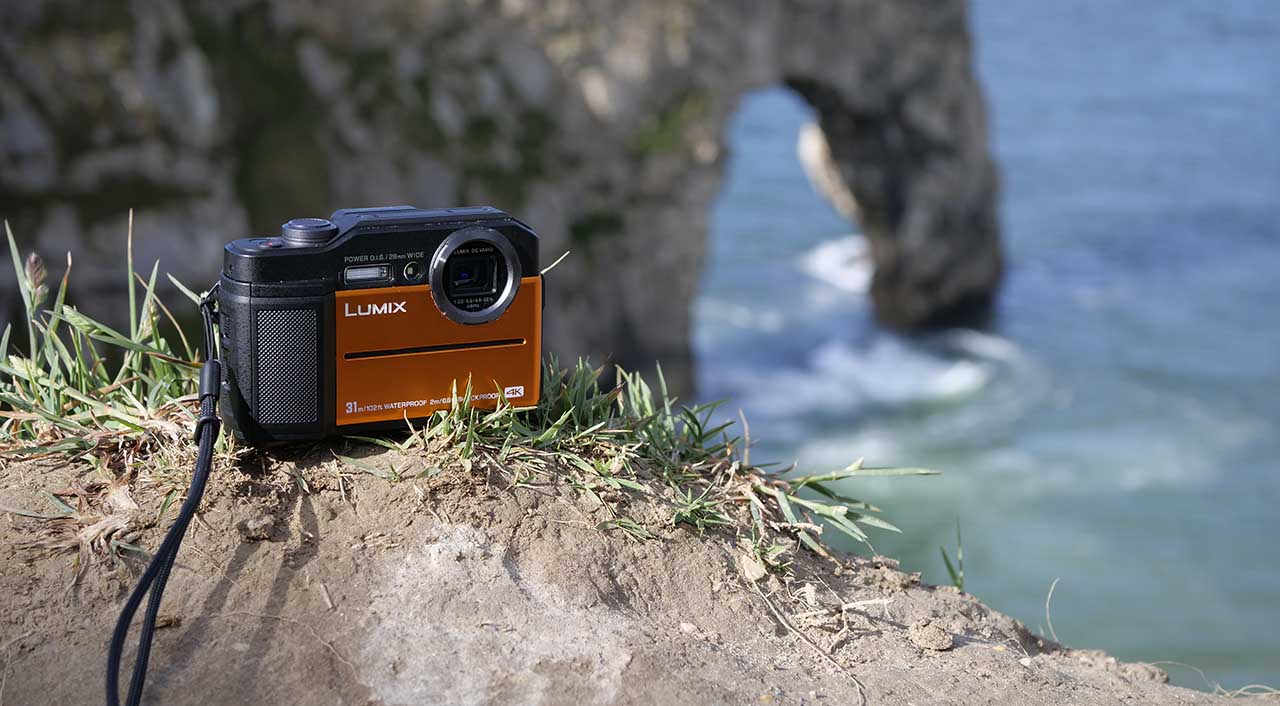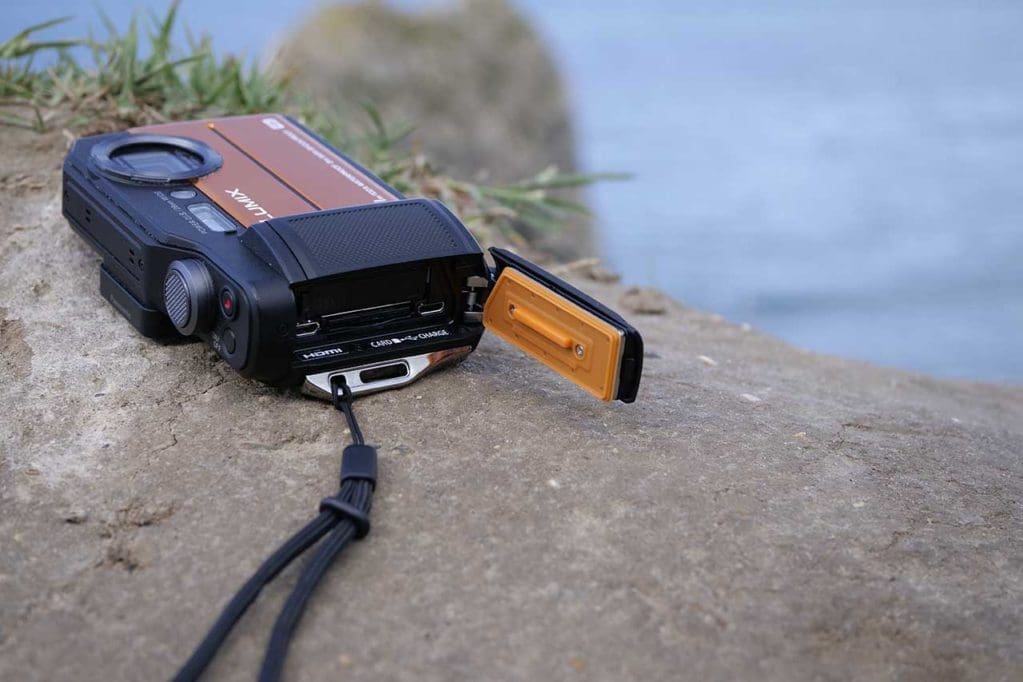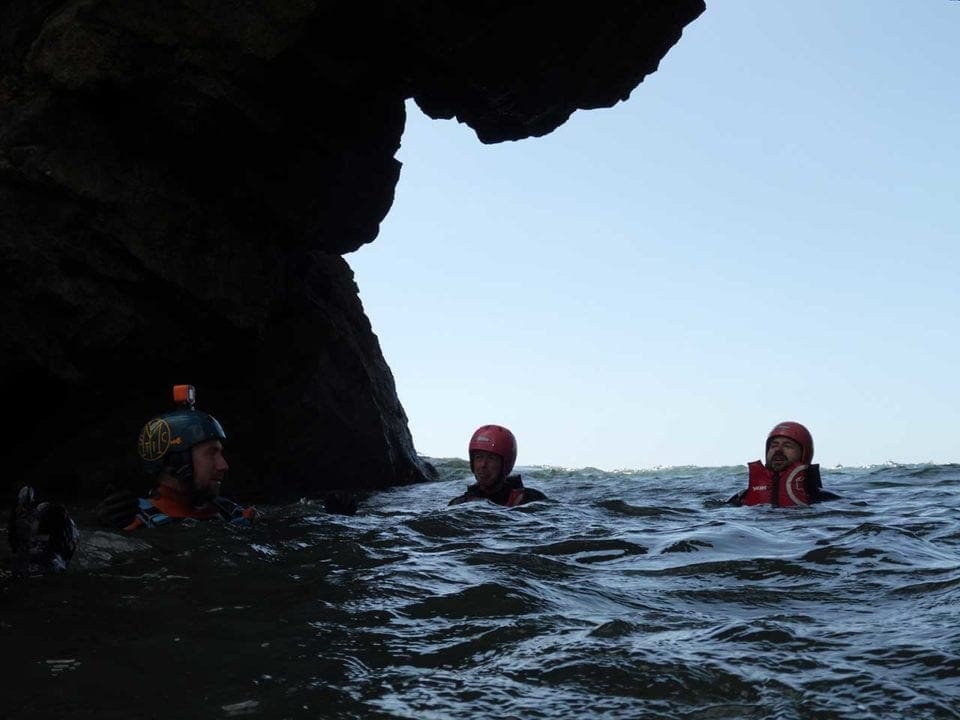There’s one area of the compact camera market that seems to be good at defending its position from the rise of smartphones – ironically enough, that’s “tough” cameras.
Tough cameras are models which you can take with you on all of those pursuits that your mobile phone simply wouldn’t be suitable for – so deep underwater, suffering knocks and scrapes, freezing cold conditions, and more.
The new Panasonic FT7 fits neatly into this category, boasting waterproofing down to a best-in-class 31 metres, shockproofing from a height of 2 metres, freezeproofing down to -10 degrees and crush proofing up to 100kg.
Other features of the Panasonic FT7 include a 20.4-megapixel high-sensitivity sensor, which is joined by a 28mm 4.6x optical zoom (giving you a 28-128mm equivalent focal length).
New for this model, when compared to its predecessor, is the introduction of a 0.2-inch, 1170k-dot equivalent electronic viewfinder. This should come in handy for composing in bright sunlight (which, if you think of the FT7 as a holiday camera, will hopefully be a pretty common occurrence).
The screen is a 3.0-inch, 1,040k-dot device, which is fixed and not touch sensitive – touch sensitivity doesn’t tend to work too well underwater, so it’s not a huge surprise that the FT7 relies on button presses instead.
As we’ve come to expect from Panasonic cameras, the FT7 is also replete with a host of other useful functions including 4K Video and 4K Photo, Wi-Fi connectivity and a range of digital picture effects.
Build Quality & Handling
The Panasonic FT7 features a solid set of rugged credentials, which as a result makes the camera feel very sturdy in the hand – arguably it looks a little blocky and utilitarian, but for a camera you’re more concerned with surviving than being stylish, you probably don’t care.
We were lucky enough to test it in two extremely apt conditions – kayaking and coasteering, and it seems to have survived both of these tests completely unscathed (you should give the camera a wash in clean water after you’ve taken it in the sea to protect against salt damage).
A decent array of buttons adorns the Panasonic FT7, which are pronounced enough from the body of the camera to be easy to operate in difficult conditions, such as in the cold, underwater or while wearing gloves (or some unlucky combination of all three).
The shutter release button, meanwhile, is a large button on the top of the camera, which would seem oddly bulbous on a normal camera, but here works well to help you find it in otherwise fiddly conditions.
The zoom is operated by a rocker switch on the back of the camera. This is positioned just underneath the small thumb rest, which makes it ever so slightly precariously positioned for accidental zooming, especially when you’re using the camera underwater or anywhere that you can’t concentrate wholly on what you’re doing.
In time I expect you’d get used to naturally placing your hand in the appropriate way, so as to ensure this doesn’t happen, though.
Other useful buttons on the Panasonic FT7 include a button which directly accesses the 4K Photo modes, a Mode button for choosing the exposure mode, a playback button and a button to switch on the LVF.
It should be noted that the LVF doesn’t automatically activate when you lift the camera to the eye – that can seem a little unnatural, but the LVF is only really there to assist on really bright days, and is unlikely to be something you’ll want to use for all of your shots.
The quick menu is where you can find the majority of basic settings that you’ll want to change regularly, such as Photo Style, video record quality, AF mode and so on. Not all options will be available in all shooting modes, with fewer options in the fully automatic mode, for example.
One particularly handy feature is the ability to charge the camera via USB. This is super useful if you’re taking the camera on adventure trips where you might not necessarily have access to a wall plug – simply chuck a battery pack in your bag and you’ll be able to charge up the FT7 on the go.
As you’d expect from a waterproof camera, the Panasonic FT7 has a sturdy and tight door which conceals the charging port and the memory card slot (the FT7 takes SD/HC/XC cards).
To open the door you’ll need to first slide open a lock switch, and then release the catch for the door, which should ensure you don’t accidentally open it underwater or in sandy/dusty conditions.
As another preventative measure, if the lock is open, you’ll see a small red strip behind the lock switch to alert you that it needs to be locked.
There are also other handy tools which are useful for a variety of different activities, which includes a compass and altimeter. There’s also the option to geotag your images via your smartphone – a good way to make sure you know exactly where you were when you took a shot.
A slightly quirky function is the ability to use the Panasonic FT7 as a torchlight without activating the camera. Panasonic says this might come in handy for things like cave walking and nighttime hikes – but it’s probably also useful for finding the toilets at a campsite at 3am, too.
A fairly small, but significant, criticism of the FT7 is that it doesn’t have an option to switch on a level while shooting.
You can display a grid, which helps somewhat, but an electronic level would have been very handy for getting pictures straight when you’re bobbing about in the sea, or in a kayak, and are almost shooting blind.
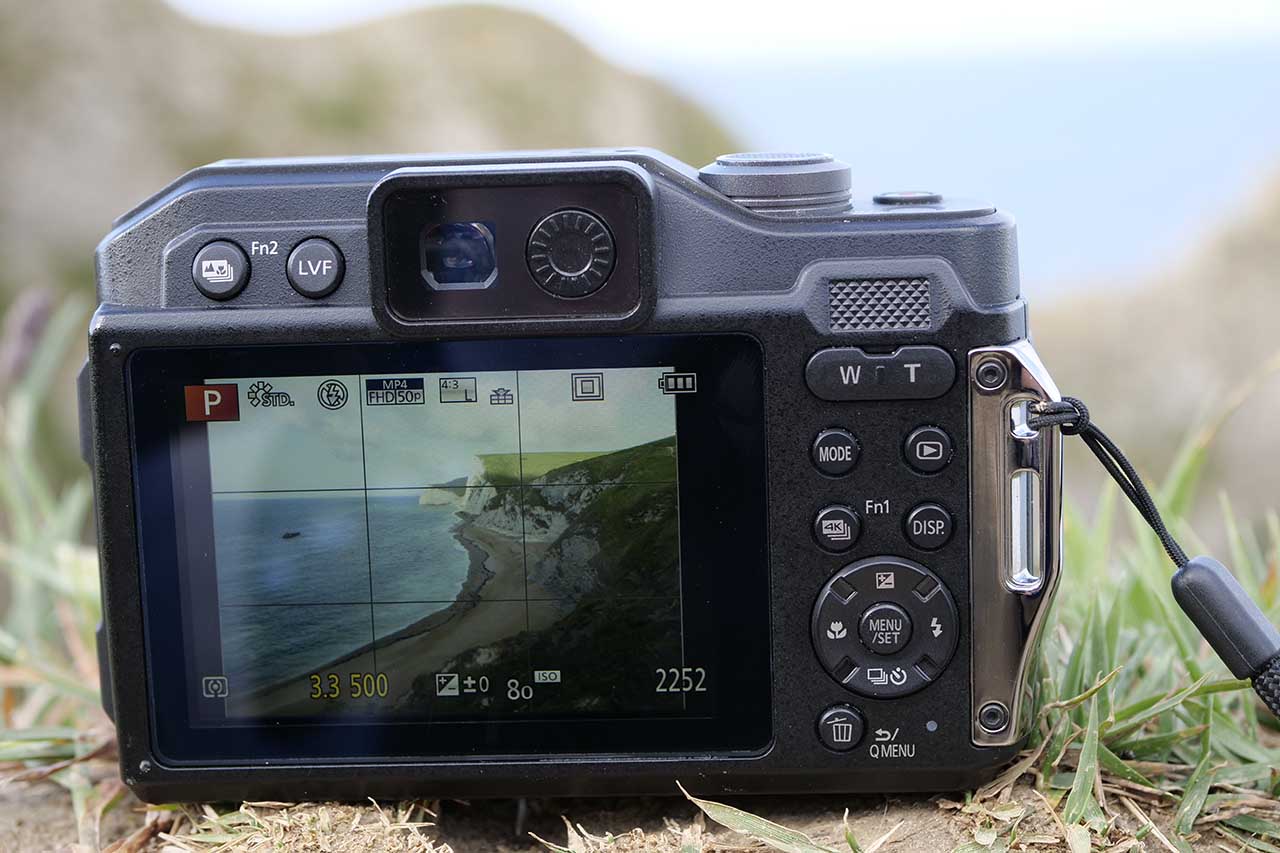
Performance
The Panasonic FT7 that we have been shooting with is an early pre-production version of the final model. Therefore, it should be noted that it may not be up to the final, finished quality in some respects – which includes image performance.
That said, early impressions are pretty good. In good light and good conditions, JPEGs straight from the camera (it doesn’t shoot raw) display a pleasing tone, with a good amount of detail.
You’re never going to get the same kind of detail as you do from your DSLR, but you also aren’t likely to go swimming with your DSLR, either – much less jump off rocks with it.
Occasionally, the FT7 struggled to find focus even with quite a distinctive subject. I’m not entirely sure if this is due to the challenges of using the camera while attempting to swim or kayak in choppy waters (so not entirely the camera’s fault), or an issue with the camera being an early sample – it’ll be interesting to see how the finished product compares.
Sample Photos
Below is a small selection of sample photos shot with the Panasonic FT7 on a kayaking and coasteering trip along England’s south coast.
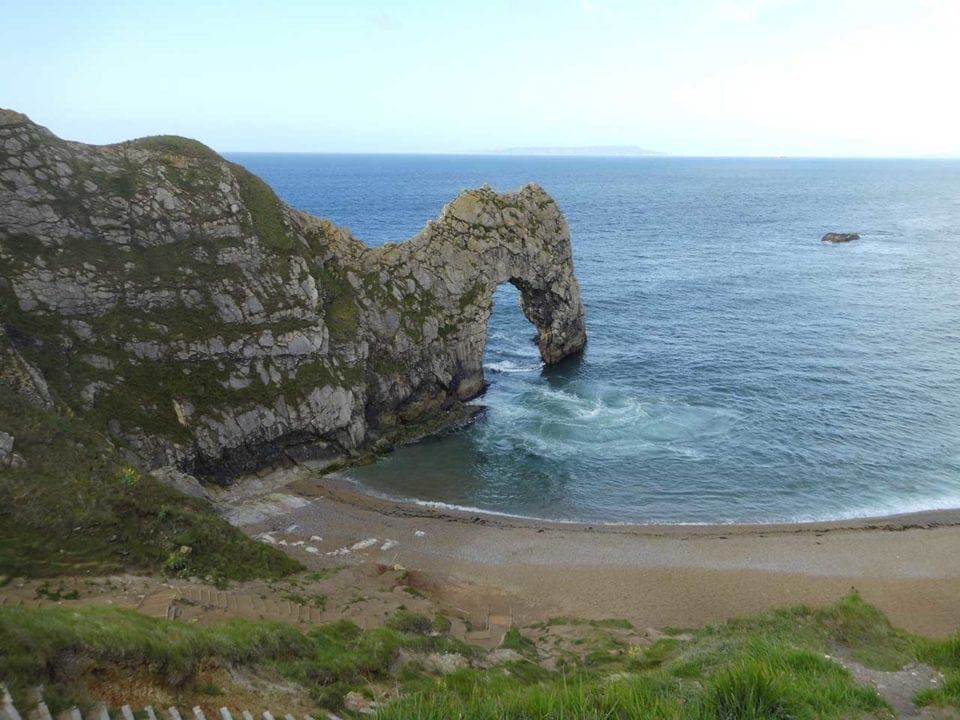
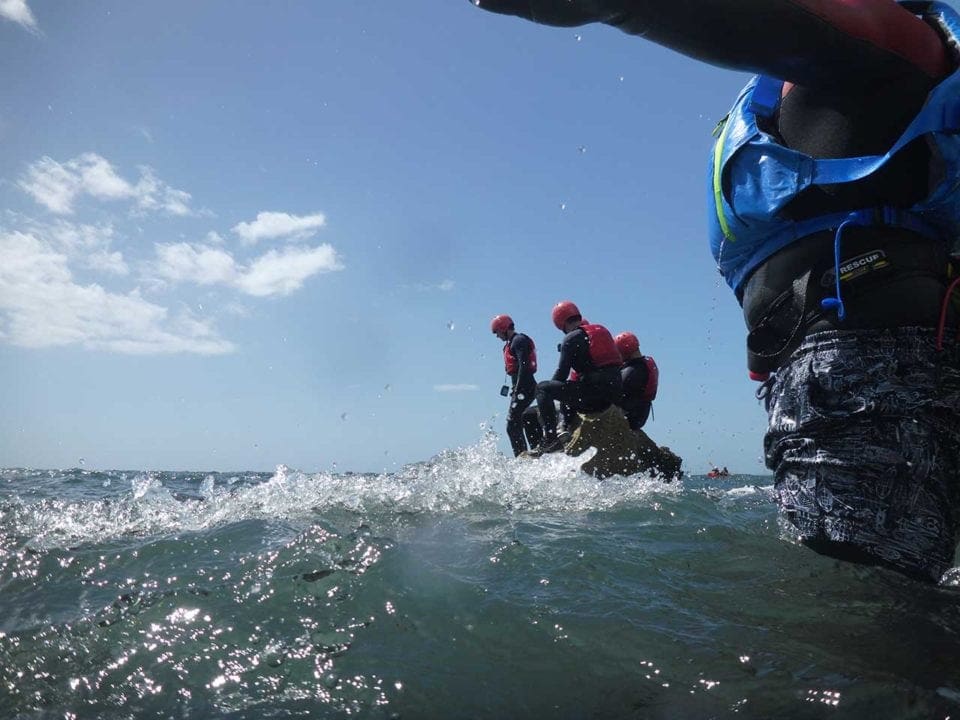




Early Verdict
While on the whole compact cameras (with a small sensor) have pretty much died a death thanks to the excellence of modern smartphones like the Huawei P20 Pro, there’s still a niche market for adventurous types who would otherwise not be able to document their endeavours.
Although we’ve only been able to use a pre-production sample of the Panasonic FT7, early impressions are very good. It’s easily withstood several intense activities, including extended dunking in sea water.
Watch this space for a full, in-depth review as soon as a full product sample becomes available.
